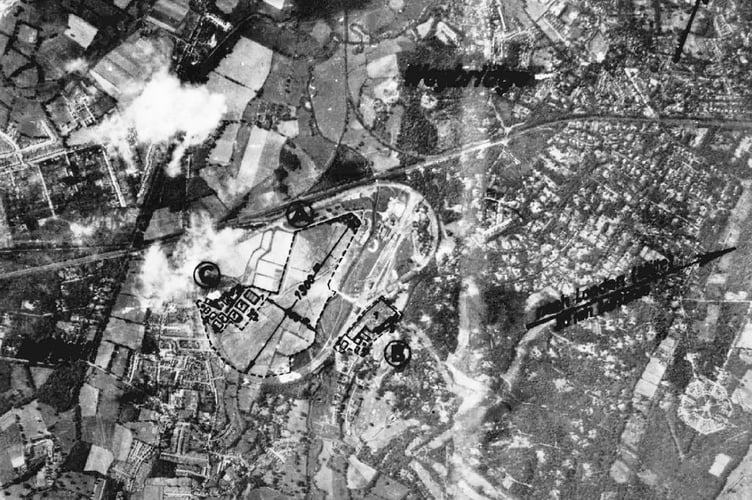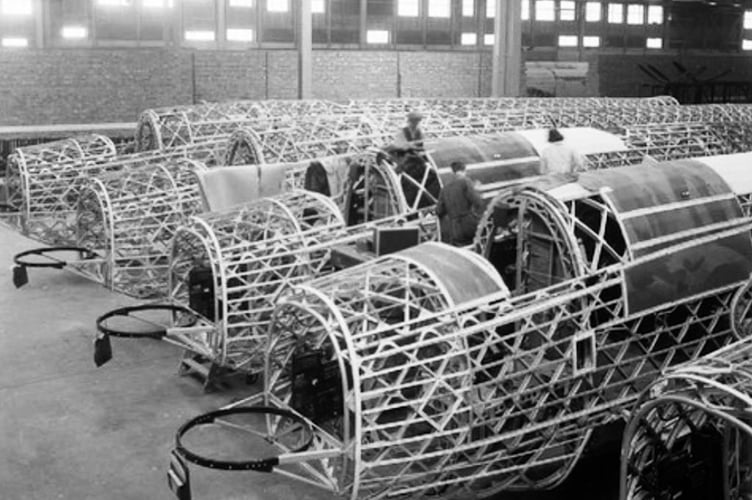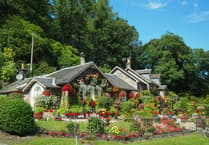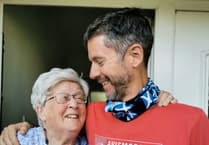AT 1.14pm on Wednesday 4 September 1940, out of a clear blue sky and completely by surprise, 13 German Messerschmitt Bf110 fighter bombers attacked the Vickers Armstrong factory at Brooklands.
They dived in, opening fire with their cannon and machine-guns. After each aircraft had dropped its two 500Kg bombs, they flew off, and headed back to their base in France.
Six bombs hit buildings in the Vickers works that was making Wellington bombers for the war effort. Eighty-seven people were killed and 419 were injured.
One bomb crashed through a stairwell leading from the canteen on the first floor of the factory, exploding close to the time clock and killing workers who were going back to work after their lunch break. Another bomb hit an air-raid shelter, while the old racing circuit grandstand also suffered a hit.
Caught off guard, no-one had gone to the air-raid shelters and the defences failed to come into action. It is thought that only one of the factory’s anti-aircraft guns opened fire. At this time, Brooklands did not have the protection of barrage balloons – they arrived two days after the raid!

For many people, it was their first experience during the Second World War that death and destruction had come so close to home. An event that was talked about for years afterwards and still is today by those who witnessed it.
Horsell resident Peter Brewer was 12 years old at the time and at his school in Ripley. He recalls that he and few others were in the playground when they heard a roar and saw aircraft passing overhead.
He says: “Then we heard anti-aircraft guns opening up from Brooklands. The younger pupils went into the school’s air-raid shelter, but we stood outside. Then there was silence.”
Back at Vickers, ambulances arrived to take the injured to hospital, but there was confusion as to the exact plans for dealing with the injured, while roads became jammed by large numbers of undesignated private cars of Vickers staff being used to transport those needing treatment.
Eventually, the casualties were taken to hospitals at Walton-on-Thames, Weybridge, Botley’s Park, Brookwood, Guildford, and the Schiff Home Woking.

It appears that many of the fatalities and injuries were caused by flying glass. The workers in one hanger were lucky as, only the week before, wire chicken mesh had been put up under the glass in the roof. In the other hangers, they were still waiting for it to be fitted.
The News & Mail of 6 September 1940 printed a report, but for security reasons did not name the Vickers factory and location.
Under the headline “Villagers see air battle”, it wrote: “German machines numbering nearly 20, raided an area in South-east England on Wednesday afternoon. They dropped a number of large bombs, there were casualties, some of which were fatal. A big air battle followed during which at least three planes were brought down in the immediate neighbourhood.”
Another part of the report noted: “The parish clerk and the postman told our representative that they saw a formation of bombers believed to be the Junkers dive bomber type, flying overhead. Then one was seen falling away and it finally crashed near a private house about a mile from the village.”
For more on this story, see the 3 September edition of the News & Mail
If you have some memories or old pictures relating to the Woking area, call me, David Rose, on 01483 838960, or drop a line to the News & Mail.
David Rose is a local historian and writer who specialises in what he calls “the history within living memory” of people, places and events in the west Surrey area covering towns such as Woking and Guildford. He collects old photos and memorabilia relating to the area and the subject, and regularly gives illustrated local history talks to groups and societies. For enquiries and bookings please phone or email him at: [email protected]




